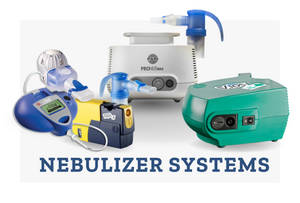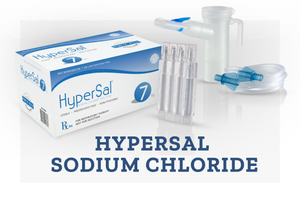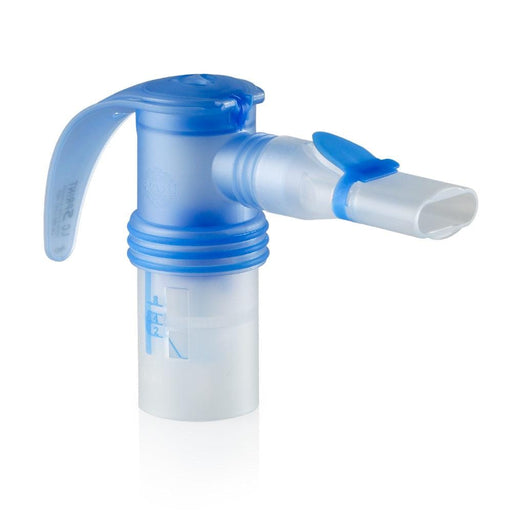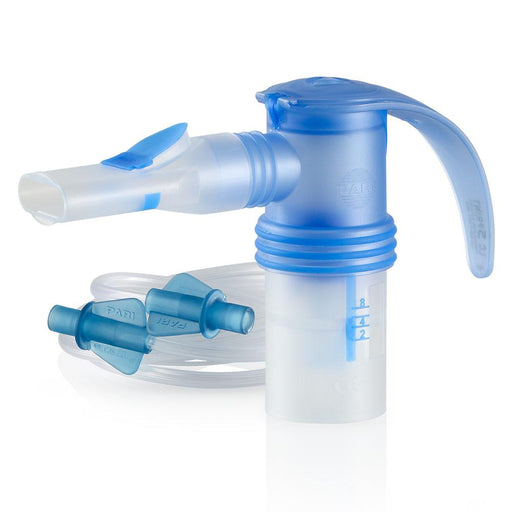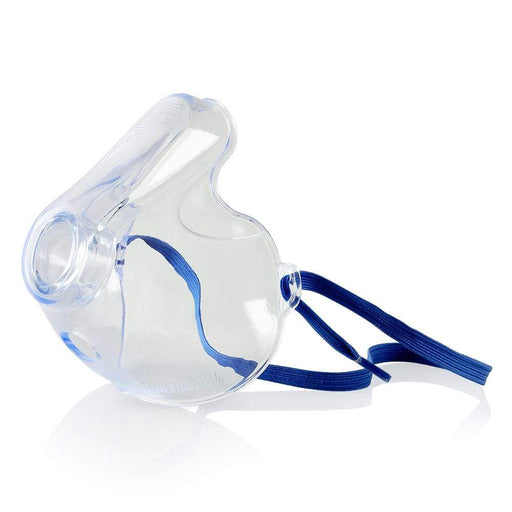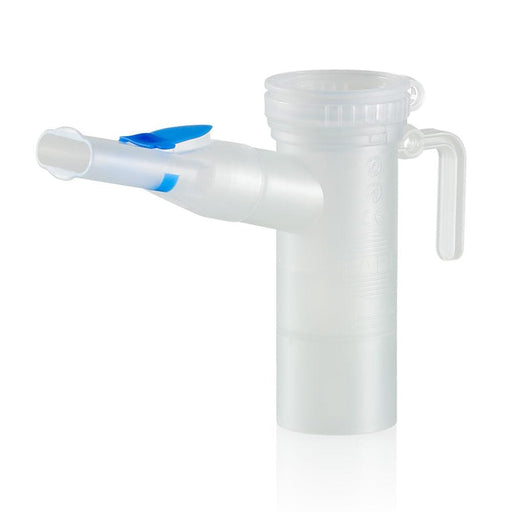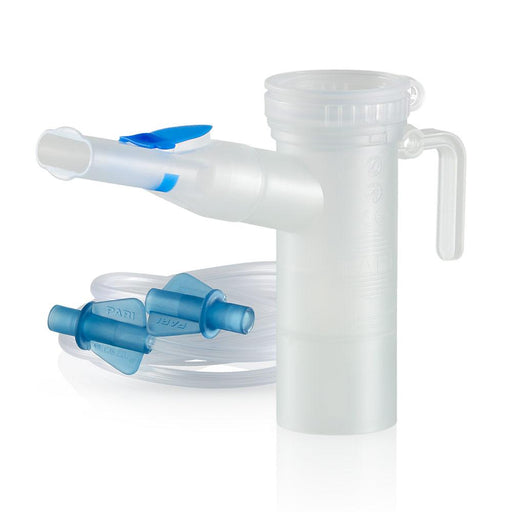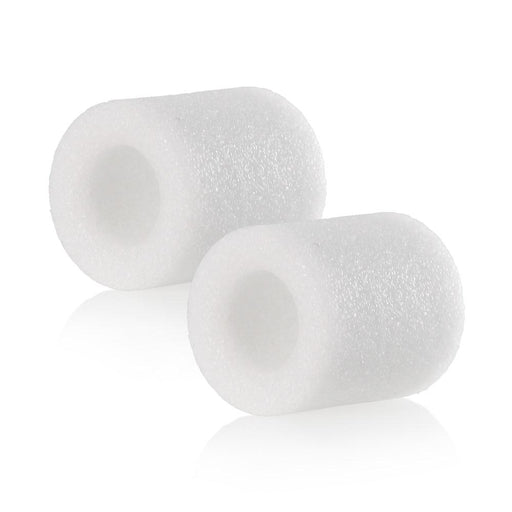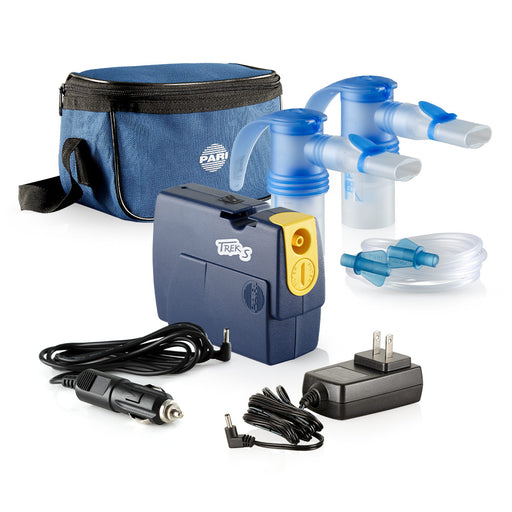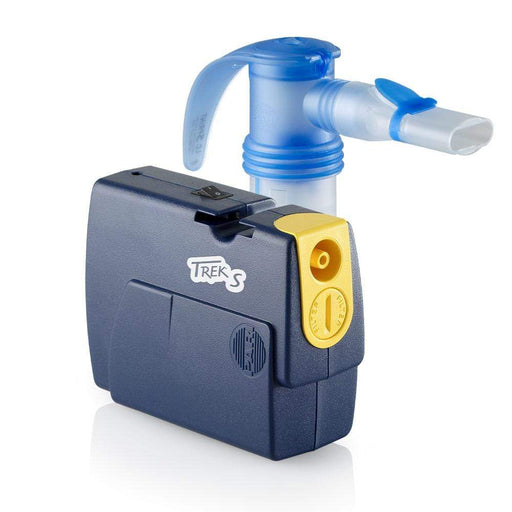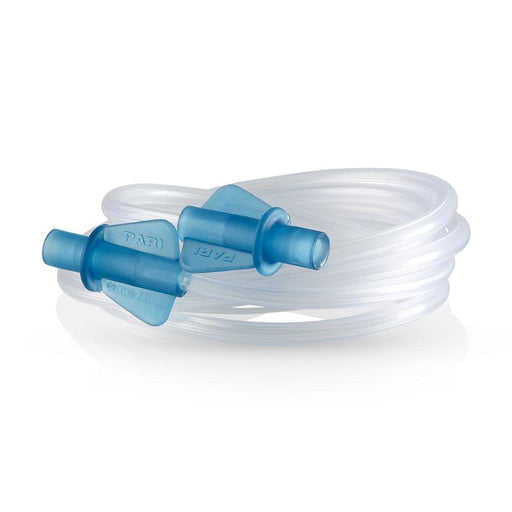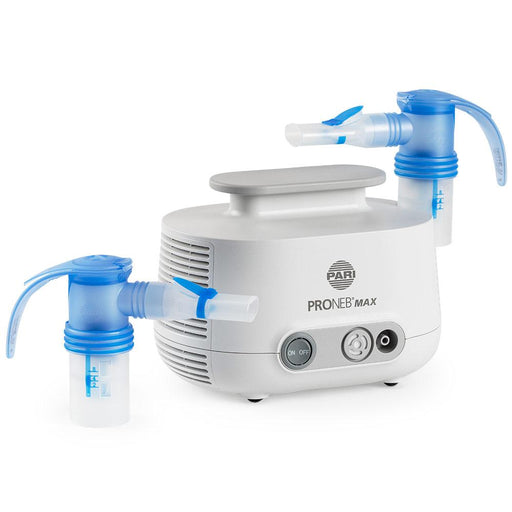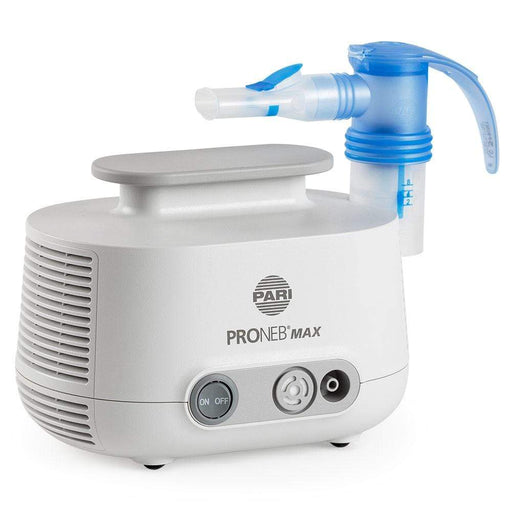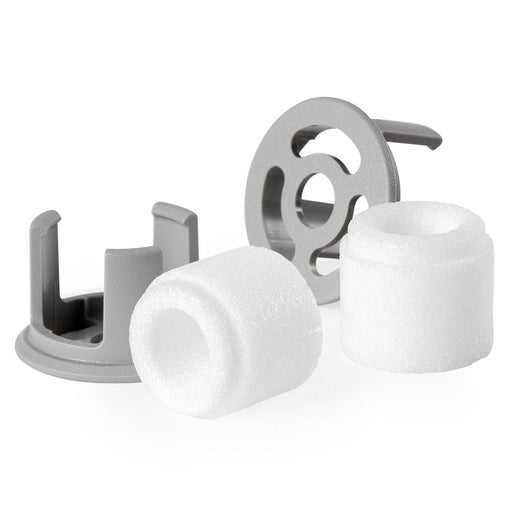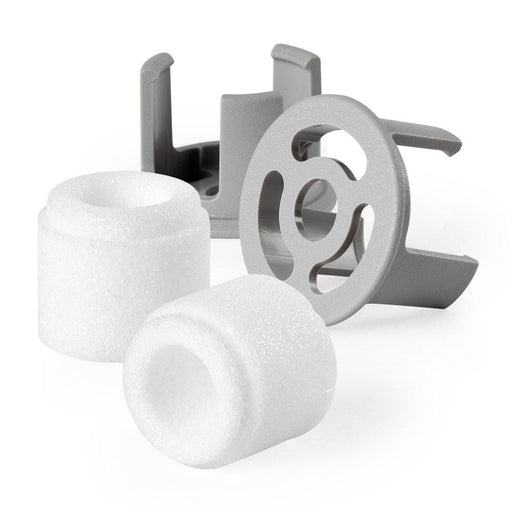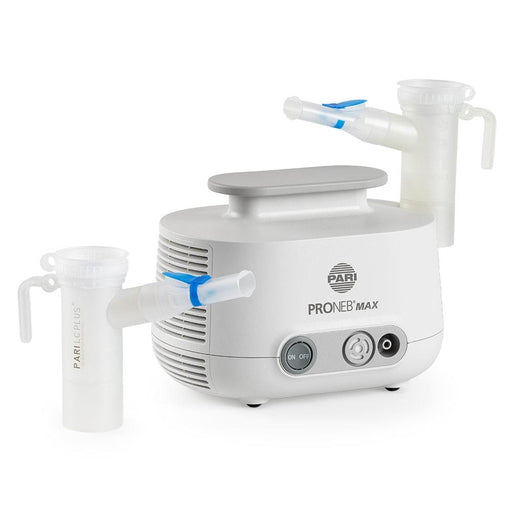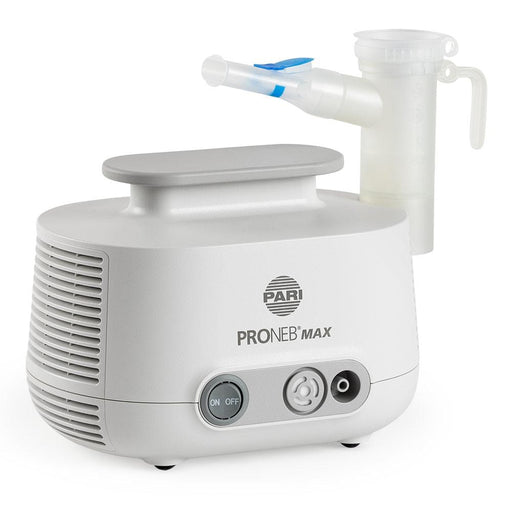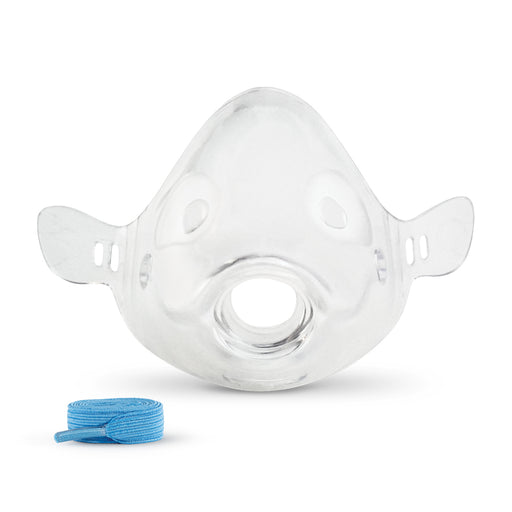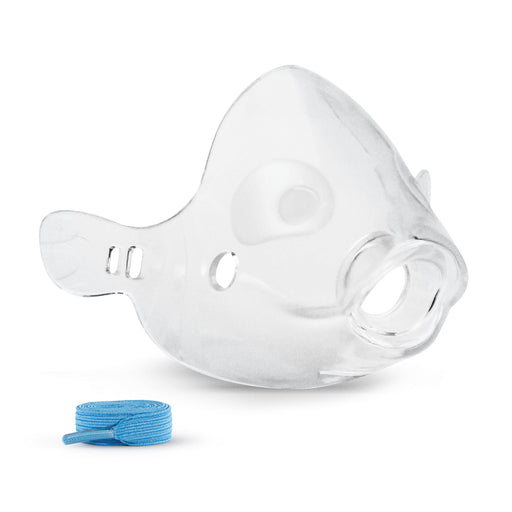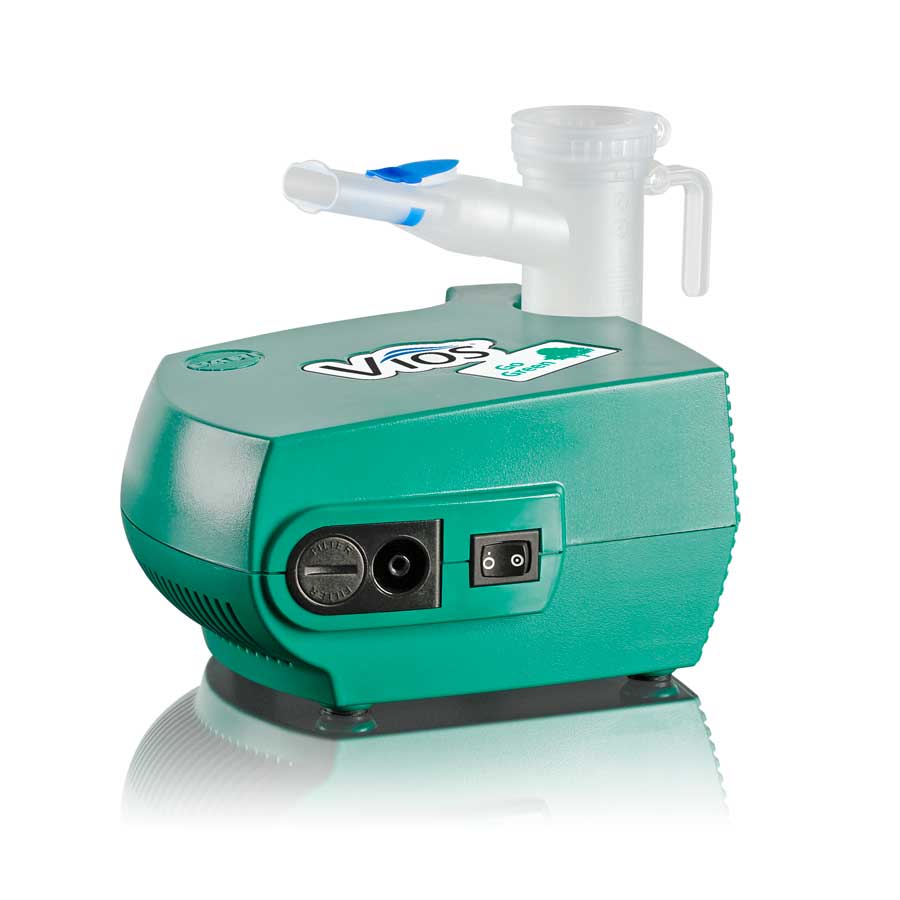
Why Would You Use a Nebulizer? Key Advantages of Aerosol Therapy
Whether you are new to respiratory treatments or have been using inhalers for years, you may be curious about the effectiveness of nebulizers. A question patients often ask their medical provider when considering making the switch is, “Do nebulizers work better than an inhaler?”. In many cases, the answer is yes.
While inhalers are an effective treatment for some, depending on a person’s individual needs, some may benefit more from taking their respiratory treatments with a nebulizer.
So, how do nebulizers differ from inhalers? First, nebulizers do not require any special breathing technique or breath hold. Simply breathe as normal. This is not necessarily true for inhalers that require a proper technique for a therapeutic amount of drug to be inhaled. Second, a nebulizer allows the treatment to take place over several minutes and multiple breaths. The margin of error is not nearly as critical as with a metered dose or dry powder inhaler where a person must inhale their medication in 1-2 breaths.
Treating a respiratory illness with a nebulizer can dramatically improve your condition, especially if you are a sufferer of asthma or COPD. For these individuals, using inhalers is often difficult or ineffective, as they struggle to inhale and hold the medication in their lungs. However, nebulizers make this process easier.
Nebulizers can even make treatments easier (and faster) for kids! Still not convinced? Here are five reasons why you should consider making the switch to nebulizers for your respiratory treatments to achieve better breathing.
5 Reasons Why Nebulizers Are the First Choice for Respiratory Treatments
Easy to Use
It doesn’t take much training to learn how to use a nebulizer. Simply connect the hose or tubing to the compressor, fill the medicine or nebulizer cup with your prescription medication, and close the cup tightly. Then, attach the hose or tubing to the bottom of the nebulizer cup. Attach either the facemask or mouthpiece to the medicine or nebulizer cup. Turn the compressor on and check to make sure there is a mist being generated in the mouthpiece or mask. Finally, place the mouthpiece in your mouth or mask over your nose and mouth, and breathe normally. After your treatment, turn off the machine, then wash and dry the nebulizer cup and mouthpiece thoroughly. Always follow the manufacturer’s instructions on cleaning and disinfecting your nebulizer.
Versatility
Nebulizers come in a variety of configurations and attachments to make inhaling the medication easier. Nebulizers for children feature smaller masks, to ensure efficient delivery of medication into the lungs. Nebulizers can also be either electric or battery-powered and are available in tabletop and portable models. Nebulizer compressor systems sit securely on a tabletop for those who prefer to do their treatments at home, while handheld and battery-operated nebulizers are great for those who are always on the go.
Nebulizers are also versatile when it comes to delivering a variety of medications. Some patients may use a nebulizer to treat an upper respiratory infection, or coughing and wheezing associated with asthma or COPD, for example.
Manufacturers have developed several types of nebulizers, such as jet nebulizers – which use powerful compressors to convert liquid medicine into a mist. Another new development is the vibrating mesh or membrane nebulizers, which push the liquid medicine through the tiny holes of a stainless-steel membrane to create medicated mist.
Portability
For respiratory patients who are always on the move, they may consider using a portable travel nebulizer system for on-the-go treatment. While home nebulizers are the mainstay of respiratory treatments, they can be too big and bulky to transport easily. These systems are also not meant to be jostled around from place to place.
The best portable nebulizer systems are powerful, compact, and convenient to use on vacation, at work, or in your car, while running errands, or even on a camping trip. Wherever you go, these systems are designed to go anywhere with you! Rechargeable batteries also ensure you never go without treatment, even during a power failure. The 12-volt DC adapters make it easy to use your portable nebulizer in your car, as well.
Kid-Friendly Treatment
Getting children to sit still for regular respiratory treatments can be a real chore for parents, and teaching them to use an inhaler correctly can be challenging. Some kids have a hard time using an inhaler because they cannot inhale deeply or hold the medicine in long enough for it to work effectively.
A children's nebulizer allows your kids to receive their medication while breathing as they normally would. With each breath, the mist from a pediatric nebulizer delivers medicine into your child’s lungs where it can go to work to make breathing easier. Designed for kids, pediatric nebulizers with specially designed facemasks deliver more medication to the lungs while reducing the amount of medication lost on your child’s face or eyes. Wearing a nebulizer mask also makes it easier for kids to watch TV or play games during their treatment.
Accessories
Nebulizer accessories make the devices even easier, more comfortable, and more effective to use. Aerosol masks fit over your nose and mouth to deliver a steady and convenient flow of medication to your lungs, for example, while sinus nebulizer medicine cups deliver the right-sized droplets of medication that travel to and stay within your nasal and sinus regions.
MDI vs. Nebulizer: Why Use a Nebulizer Over an MDI?
People with asthma, COPD, or cystic fibrosis often have trouble inhaling deeply enough to take in metered-dose inhalers (MDIs), and therefore find it easier and more effective to use a nebulizer to take their medications.
MDIs are small, handheld, and portable devices designed to deliver medication to the lungs. While MDIs are handy and easy to carry, they can easily be used incorrectly, which means you aren’t getting a sufficient dosage of medication.
Inhalers require a specific technique to deliver the medication into the lungs effectively. If not being used correctly, the medication reaches the back of your throat and less gets into your lungs. As a result, your respiratory treatment may be less effective which can make your condition more difficult to manage.
Using a metered dose inhaler (MDI) requires the patient to exhale completely before inhaling. Then, they must inhale the medicine deeply and slowly, hold their breath for 10 seconds, and pause for 30 seconds before inhaling a second “puff.” Unfortunately, many individuals cannot inhale deeply enough (and hold their breath long enough) for the treatment to be effective.
Learning the correct MDI inhaler techniques can be especially problematic for children, who are often too impatient to inhale their medicine slowly. This is particularly true for young children or those kids in distress because they are struggling to breathe. In this situation, adults and children may benefit from using spacers.
Even with the use of spacers, adults and children still may be using their MDIs incorrectly. A 2019 study found that as many as 84 percent of people with asthma are using their inhalers incorrectly.
If you want to get the most out of your respiratory treatment, making the switch to a nebulizer could make it easier to take treatments. When it comes to selecting a provider you can rely on, choose Nebology for a trusted name. Our clinically proven nebulizer systems can help patients receive the care they need, effectively and efficiently. To learn more about our PARI nebulizer products, visit our site or contact our team.
SHOP CLINICALLY PROVEN NEBULIZER SYSTEMS & SUPPLIES
-
PARI LC Sprint Reusable Nebulizer Cup & Tubing: Speed & Comfort Combined
Original price $15.95 - Original price $15.95Original price$15.95$15.95 - $15.95Current price $15.95In stockOriginal price $15.95 - Original price $15.95Original price$15.95$15.95 - $15.95Current price $15.95 -
PARI LC Adult Aerosol Mask: Comfortable, Effective Medication Delivery
Original price $6.00 - Original price $6.00Original price$6.00$6.00 - $6.00Current price $6.00In stockOriginal price $6.00 - Original price $6.00Original price$6.00$6.00 - $6.00Current price $6.00 -
PARI LC Plus Reusable Nebulizer Cup & Tubing: Reliable Aerosol Delivery
Original price $15.95 - Original price $15.95Original price$15.95$15.95 - $15.95Current price $15.95In stockOriginal price $15.95 - Original price $15.95Original price$15.95$15.95 - $15.95Current price $15.95 -
Filters for PARI Vios, Ultra II, and Trek S System - 2 Per Package
Original price $9.45 - Original price $9.45Original price$9.45$9.45 - $9.45Current price $9.45In stockOriginal price $9.45 - Original price $9.45Original price$9.45$9.45 - $9.45Current price $9.45 -
PARI Trek S Portable Nebulizer System with LC Sprint: High-Quality On-the-Go Therapy
Original price $79.00 - Original price $189.00Original price$79.00 - $189.00$79.00 - $189.00Current price $79.00In stockOriginal price $79.00 - Original price $189.00Original price$79.00 - $189.00$79.00 - $189.00Current price $79.00 -
PARI Wing Tip Tubing: Secure, Tangle-Free Connection for Better Treatments
Original price $8.00 - Original price $8.00Original price$8.00$8.00 - $8.00Current price $8.00In stockOriginal price $8.00 - Original price $8.00Original price$8.00$8.00 - $8.00Current price $8.00 -
PARI PRONEB Max Nebulizer System with LC Sprint: Powerful & Efficient
Original price $99.00Original price $99.00 - Original price $99.00Original price $99.00Current price $84.99$84.99 - $84.99Current price $84.99In stockOriginal price $99.00Original price $99.00 - Original price $99.00Original price $99.00Current price $84.99$84.99 - $84.99Current price $84.99Sale -
Filters for PARI PRONEB Max System (2 Per Package): Clean, Efficient Treatments
Original price $9.95 - Original price $9.95Original price$9.95$9.95 - $9.95Current price $9.95In stockOriginal price $9.95 - Original price $9.95Original price$9.95$9.95 - $9.95Current price $9.95 -
PARI PRONEB Max Nebulizer System with LC Plus: Effective Heavy-Duty Therapy
Original price $99.00Original price $99.00 - Original price $99.00Original price $99.00Current price $84.99$84.99 - $84.99Current price $84.99In stockOriginal price $99.00Original price $99.00 - Original price $99.00Original price $99.00Current price $84.99$84.99 - $84.99Current price $84.99Sale -
PARI Bubbles Pediatric Aerosol Mask: Gentle, Fun Treatments for Kids
Original price $5.95 - Original price $5.95Original price$5.95$5.95 - $5.95Current price $5.95In stockOriginal price $5.95 - Original price $5.95Original price$5.95$5.95 - $5.95Current price $5.95

